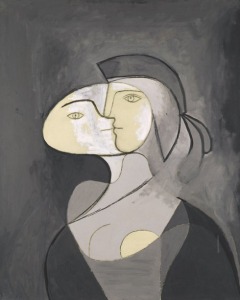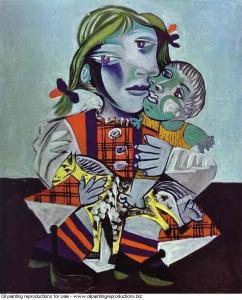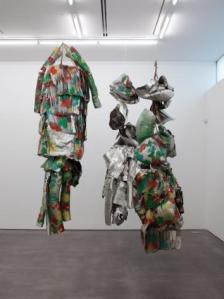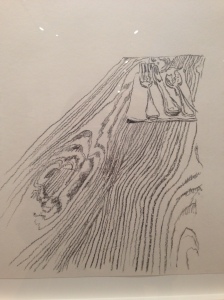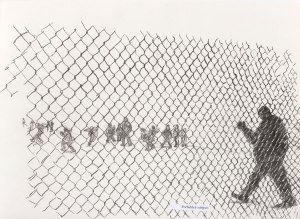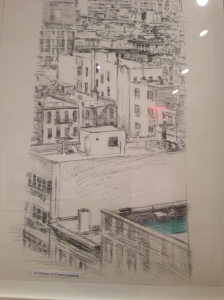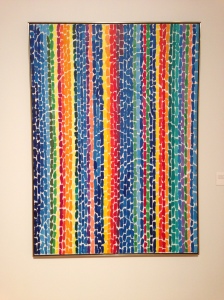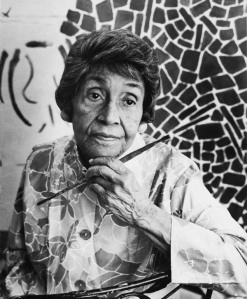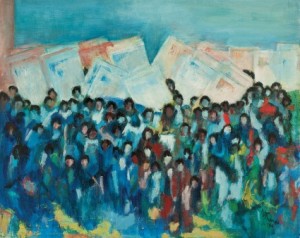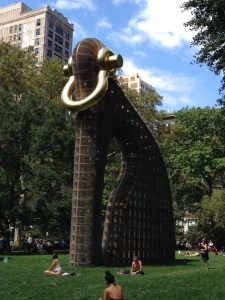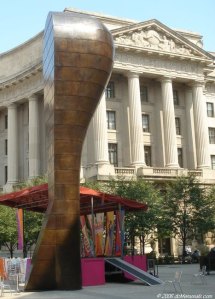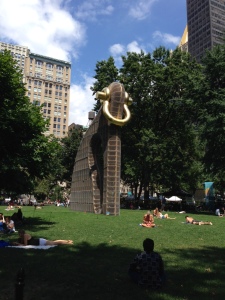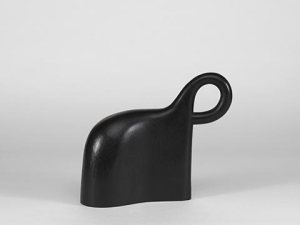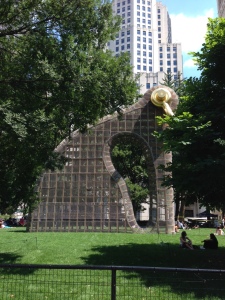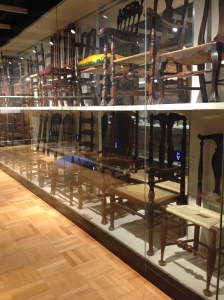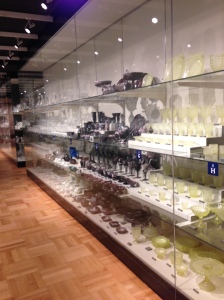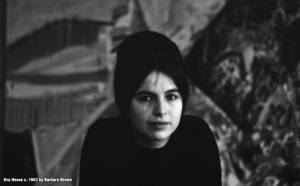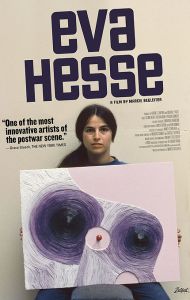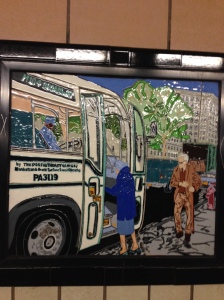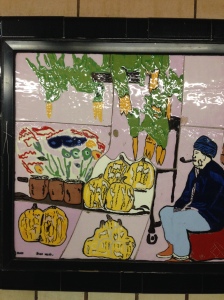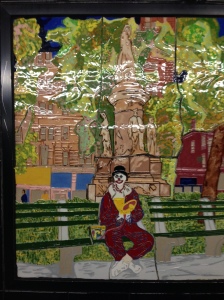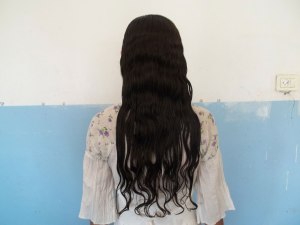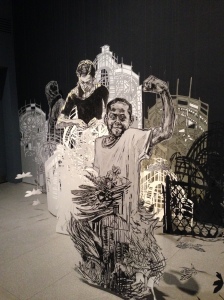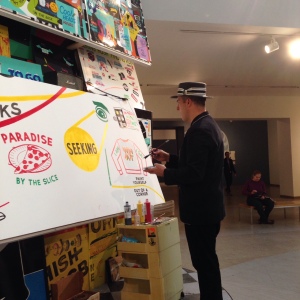This slideshow requires JavaScript.
Chances are, if you’re heading to the Jewish Museum in the next few months it’s to see John Singer Sargent’s Mrs. Carl Meyer and Her Children. This is a wonderful exhibit but another really great reason to visit the Jewish Museum before February 5th is Take Me (I’m Yours)
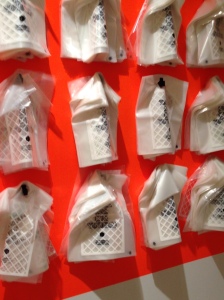
Plastic bags offered to visitors at the Jewish Museum
Most of the time, when you visit a museum, you look, observe, but never touch or take-away something. Take Me (I’m Yours) offers a different approach. At this exhibit, visitors are encouraged to take, touch, and transform the art they see. Forty-two international and inter-generational artists, are represented here, many of whom created new and site-specific works for the exhibition. This presentation builds upon an exhibition of the same name that took place in 1995 at the Serpentine Gallery in London. Conceived by the curator Hans Ulrich Obrist and the artist Christian Boltanski, it included works by twelve artists, several of whom are participating again here, according to the Jewish Museum.
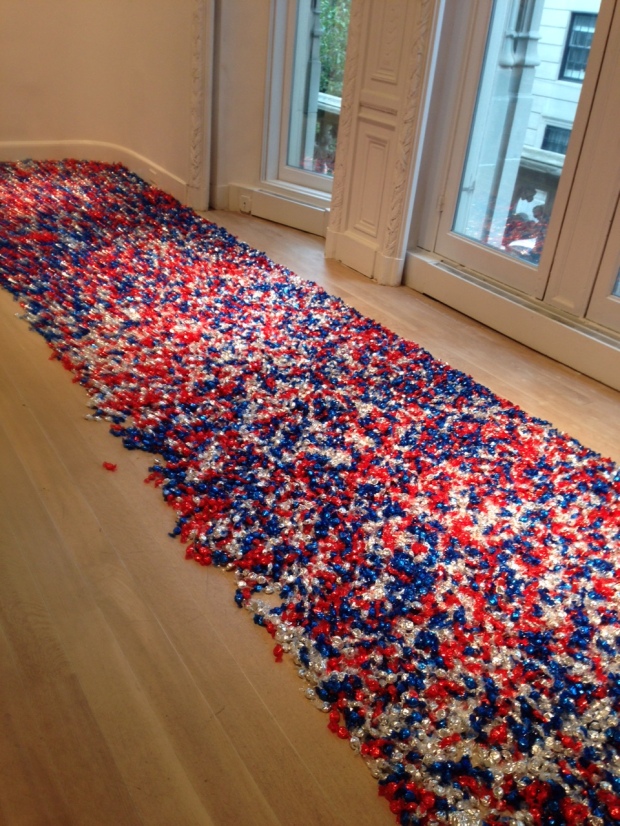
Felix Gonzalez-Torres, Untitleed (USA Today), red, silver and blue cellophane wrapped candies
One artist who perfectly exemplifies the message of this exhibit is Felix Gonzalez-Torres. You may have seen his work at the recently closed Unfinished exhibit at the Met Breuer. “Untitled” (USA Today) is comprised of candies individually wrapped in red, silver, and blue cellophane. Viewers are invited to take a piece of candy. Gonzalez-Torres, who lost his partner to AIDS, created this installation, and similar ones with other objects, to symbolize the fragility of life.

Watchword (2012),Rivane Neuenschwander, wood, felt, elastic, high density foam board, decal lettering, fabric labels, pins

Watchword (2012)Rivane Neuenschwander, wood, felt, elastic, high density foam board, decal lettering, fabric labels, pins
With most of the exhibits in the show, the visitor is encouraged to take something, rather than create. Watchword (2012), by Rivane Neuenschwander, invites visitors to take a tag, either to safety-pin onto their own clothing or to pin to a felt-covered board. In both cases the words — borrowed from the language of protest: take, back, justice — form a poetic, global map of resistance.
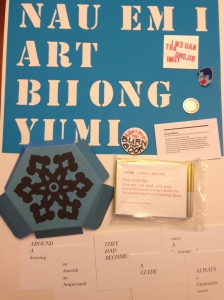
Take-away items from Take Me (I’m Yours), Jewish Museum
Take Me (I’m Yours) is engaging, fun and thought-provoking. What’s not completely clear, is why this exhibit is at the Jewish Museum. The museum explains it as follows: “Sharing pervades Jewish life, beginning in the home and extending out to the community. Here the exhibition is the home, and the works are what we share with you, our visitors.” A bit of a stretch but don’t let that stop you from experiencing it.
